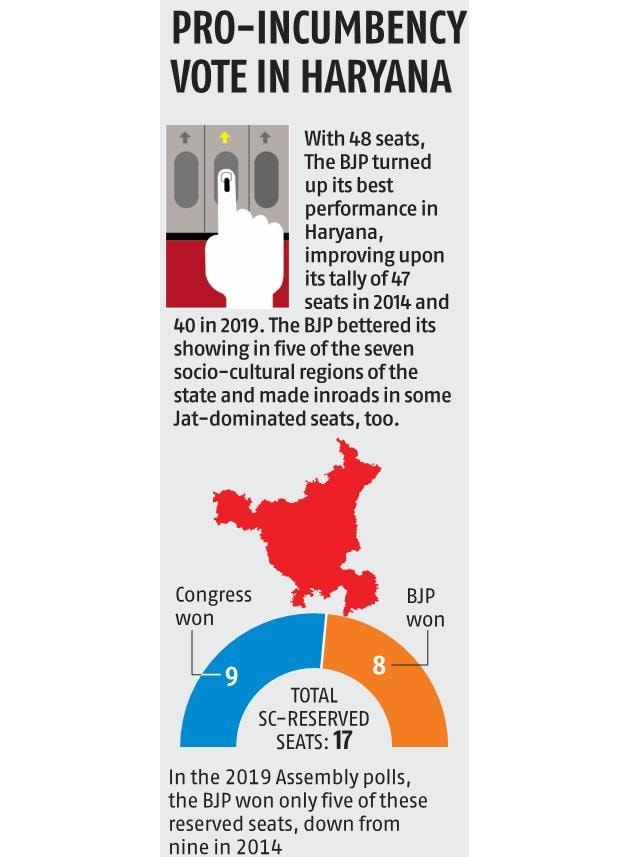Task for the BJP in Haryana: find funds for election promises
The Bharatiya Janata Party’s (BJP) election manifesto appears to have resonated with the electorate in Haryana even as critics raised concerns over dissatisfaction among the crucial voter demographic including farmers, youth and soldiers.
With twenty promises on the table, the party threw the net wide open and met a wide range of needs. One of the key promises is to purchase 24 crops at a guaranteed minimum support price (MSP) and guarantee government jobs for every Agniveer, which targets farmers and soldiers. Laado Laxmi Yojana is expected to empower women by providing Rs 2,100 monthly to eligible recipients.
Healthcare is also a focus, with the Chirayu-Ayushman Yojana offering free medical treatments of up to Rs 1 million for families, besides Rs 500,000 for senior citizens above 70 years. The Har Ghar Grihani Yojana promises affordable LPG cylinders for Rs 500, while the Awal Balika Yojana will support female students in rural areas by providing scooters to improve their mobility and access to education.
As the BJP navigates these expectations, it is essential to examine Haryana’s fiscal health to gauge how effectively these commitments can be met. The state’s ability to generate its own tax revenue is promising, with an estimated 72.5 percent of total revenue coming from this head – significantly higher than other states’ average of 49.2 percent for 2023-2024.
While tax revenues appear promising, about 60 percent of estimated revenues go to existing expenses, including salaries and pensions, limiting the flexibility to fund new initiatives. On the infrastructure front, the BJP has promised to build ten industrial cities, each expected to create jobs for 50,000 locals, besides building the Kundli-Manesar-Palwal Orbital Rail Corridor and launching new Vande Bharat trains in cooperation with the central government. Yet, there is an expected decline in capital expenditure from Rs 17,666 crore in FY20 to Rs 16,821 crore in FY25, raising questions about the feasibility of these ambitious plans.
While recent data from the Periodic Labor Force Survey (PLFS) shows a decline in the unemployment rate from 6.1 per cent in 2022-23 (July-June) in the state to 3.4 per cent in 2023-24, slightly above the national average. This does not fully address the challenges faced by graduates and postgraduate students.
These segments had an unemployment rate of 6.6 percent and 7.5 percent respectively in the period 2023-2024.

First publication: Oct 9, 2024 | 12:32 pm IST
